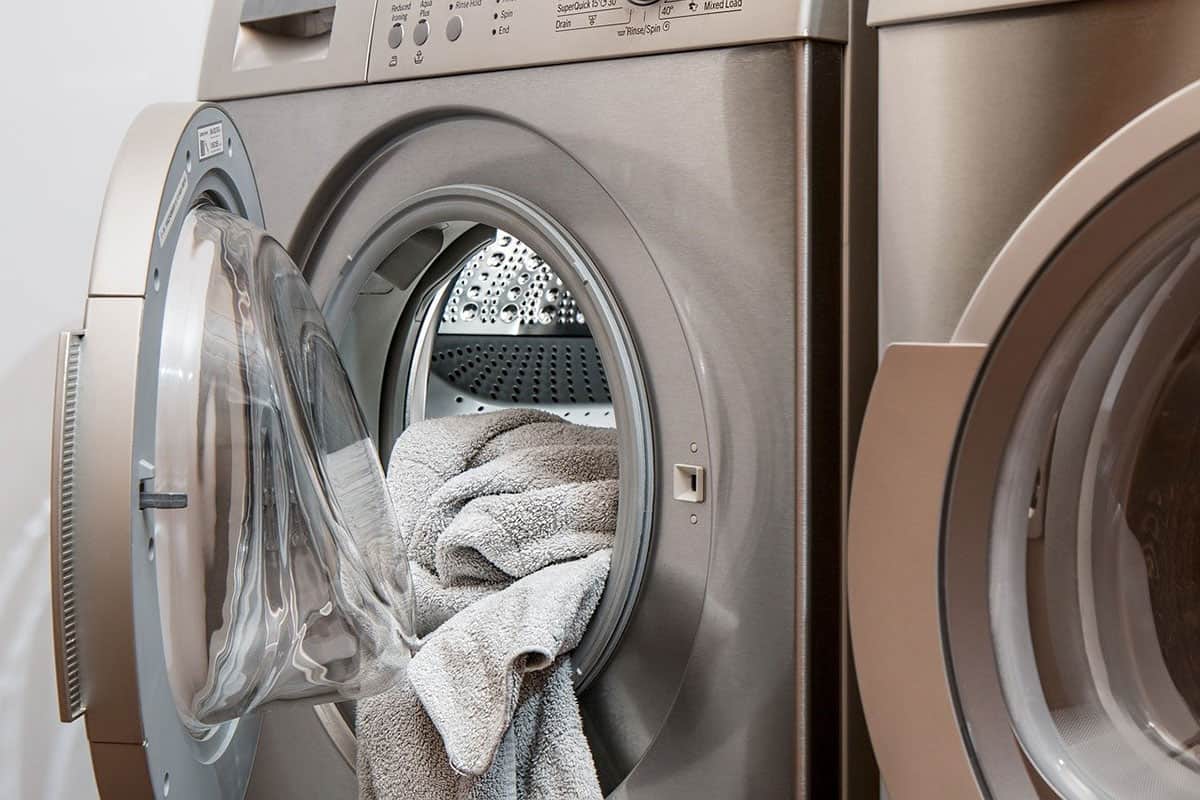This page may contain affiliate links. If you click and buy, we might get a small commission at no cost to you.
After taking a shower, one of the best feelings is wrapping yourself in a soft, fluffy towel. The last thing you want is to be scratching yourself up while drying with a towel that’s lost its absorbing capabilities.
As we all know, even high-quality towels can become stiff and scratchy over time. Luckily, your only solution isn’t to go out and buy new towels. Revive your old towels with some fluffiness with these tips on how to make scratchy towels soft again.
How to make scratchy towels soft again
Give your old, stiff towels a pick-me-up with these 10 tips.
1. Use less detergent
One of the leading causes of stiff towels is leftover detergent residue from a wash. You don’t necessarily need the amount of detergent recommended on the bottle for each wash.
Cut back by half and run an extra rinse cycle to ensure the detergent washes off your towels completely. This method will ensure your towels don’t get scratchier with each wash. It’s also great practice for new towels, so you can extend their fluffiness over time.
2. Don’t use fabric softener
Similar to too much detergent, fabric softeners can make your towels scratchy. They have oils and other ingredients that form a waxy build-up, which breaks down your towel’s integrity over time.
You’ll end up with less absorbent towels that feel slick instead of fluffy. Therefore, while attempting to make your scratchy towels soft again, it’s best to completely skip using commercial fabric softeners.
3. Add white vinegar to your wash
Instead of using fabric softener, add a cup of distilled white vinegar into your fabric softener compartment. Don’t use any detergent for this load. The white vinegar will make your towels feel newer with a smooth texture since the threads will feel closer together.
Distilled white vinegar also provides other benefits for fabrics, including:
- Deodorizing strong smells
- Removing stains naturally
- Brightening without the risk of lifting dye like color-safe bleach

4. Add baking soda to your wash
When washing your towels, mix half a cup of baking soda with your normal detergent for thicker, bouncier towels. The baking soda also makes your towels cleaner and eliminates mildew and musty smells from towels being damp for too long.
One downside of this method is the towels won’t always have the softness you desire. The baking soda can make the threads feel spikier. You should combine this method with the one above for the best results. Start by washing your towels with baking soda and detergent, then do a second wash with white vinegar to remove the spikes.
5. Brush out your towel
Once your towel is clean and dry, use a hairbrush to brush out the surface. It will help break down the dried detergent residue that causes scratchy towels as well as separate the threads to make your towel softer to the touch. Most types of brushes would work, including paddle brushes with plastic bristles.
Yes, this method can take time to sit and brush out your entire towel, however it does offer a significant difference. Just try one section and you’ll see how the brushed area is thicker and softer, whereas the non-brushed area is matted and flat.
7. Use a water softener
Sometimes towels can be scratchy after a wash because of the hard water in your area. Hard water contains minerals, such as magnesium and calcium, making cleaning your towels more difficult. Adding a water softener can help your towels become less scratchy as well as prevent any limescale build-up in your washing machine.
8. Don’t overload the washing machine
When you stuff your washing machine, you end up with a heap of clumped together towels. The moisture pockets in the clump will lead to stiff, scratchy towels. Instead, you want to wash a load of only towels and provide plenty of room.
When your washing machine isn’t overloaded, the towels have room to circulate easier, so they are rinsed and fluffed properly. Also, make sure not to wash your new towels with used towels since the mix can transfer color to your new towels, making them look less pristine.
9. Pay attention to wash temperature
Different towels require different treatments when washing to maintain the fabric’s integrity. By washing at the right temperature, you can maximize the effectiveness of the wash for softer towels.
So read the labels and follow their instructions, loading similar towels together. Most towels are made of cotton and at least 40 degrees is the best temperature. If your towels can handle hotter, 60 degrees will help with killing germs.
10. Improve your line drying process
Suppose you want to save on energy bills by line-drying your towels. It’s natural that they will feel stiff and scratchy as a result. Make sure to shake out your towels first before putting them on the line.
This helps loosen the fibers before drying so they can become more fluffy. You can also throw them in the dryer for a quick “no-heat” fluff to remove the stiffness. This still saves on energy bills compared to a full drying cycle.
Soft towel recommendations on Amazon:



